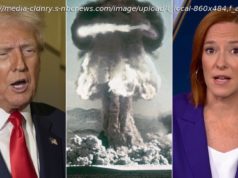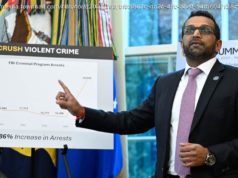
President Donald Trump enters the Oval Office, at the White House in Washington, Jan. 25, 2017. Rarely if ever has a president been as reactive to random inputs as Trump, who has left career government officials and members of Congress alike struggling to discern policy from random tweets spurred by something on television.
By Peter Baker, New York Times News Service
Thursday, Jan. 26, 2017 | 2 a.m.
WASHINGTON — Impetuous and instinctive, convinced of broad but hidden plots to undermine him, eager to fight and prone to what an aide called “alternative facts,” President Donald Trump has shown in just days in office that he is like few if any occupants of the White House before him.
He sits in the White House at night, watching television or reading social media, and through Twitter issues instant judgments on what he sees. He channels fringe ideas and gives them as much weight as carefully researched reports. He denigrates the conclusions of intelligence professionals and then later denies having done so. He thrives on conflict and chaos.
For a capital that typically struggles to adjust to the ways of a new president every four or eight years, Trump has posed a singular challenge. Rarely if ever has a president been as reactive to random inputs as Trump. Career government officials and members of Congress alike are left to discern policy from random Twitter posts spurred by whatever happened to be on television when the president grabbed the remote control.
While that habit generated conversation and consternation when Trump was a candidate, he now serves as commander in chief, and his 140-character pronouncements carry the power of Olympian lightning bolts. In the course of 24 hours alone, he threatened to send federal forces into Chicago and vowed to investigate his own false claim that 3 million to 5 million votes were cast illegally in November, costing him the popular vote. The trumpet blasts come even as he issues daily executive actions overturning long-standing policies across the board.
Trump’s advisers say that his frenzied if admittedly impulsive approach appeals to voters because it shows that he is a man of action. Those complaining about his fixation with fictional voter fraud or crowd counts at his inauguration, in their view, are simply seeking ways to undercut his legitimacy.
Yet some of his own advisers also privately worry about his penchant for picking unnecessary fights and drifting off message. They talk about taking away his telephone or canceling his Twitter account, only to be dismissed by a president intent on keeping his own outlets to the world.
On the blueprint mapped out by the White House, Wednesday was supposed to be a day devoted to national security. The president signed executive action intended to begin the process of building his promised wall on the Mexican border and he prepared other orders to curb refugees from Middle Eastern countries.
Even these planned actions had the feel of someone rushing toward the sound of gunfire. Like other orders signed in recent days, they were hurriedly prepared with many questions left unanswered, such as where the money for the wall will come from, assuming Mexico does not cut a check as Trump has demanded. And the leak of a draft order reinstating black-site prisons and harsh interrogation techniques consumed more attention even amid White House disavowals.
Amid this flurry of activity that has attempted to reverse the Obama administration’s policy on health care, the environment, trade, immigration, national security and housing in just five days came the president’s spontaneous forays into controversy, provoked by the chyrons on his television screen.
During his 8 p.m. show on Fox News on Tuesday, for example, Bill O’Reilly aired a segment on the crime crisis in Chicago and interviewed an expert talking about whether the president could intervene. The guest called the violence in Chicago “carnage.”
At 9:25 p.m., Trump sent out a Twitter post, using the same statistics that O’Reilly had flashed on the screen. “If Chicago doesn’t fix the horrible ‘carnage’ going on, 228 shootings in 2017 with 42 killings (up 24 percent from 2016), I will send in the Feds!” the president wrote.
Similarly, after reporters pressed Sean Spicer, the White House press secretary, on Tuesday about why, if he really believed there was widespread vote fraud, the president did not order an investigation, Trump on Wednesday morning blasted out a Twitter message saying he would do just that.
More than any president before him, Trump is a creature of television and social media, a reality show star obsessed with Nielsen ratings who vaulted himself to the highest office in the land on the back of a robust Twitter account.
President Lyndon B. Johnson kept three televisions in the Oval Office so he could watch all three network nightly news broadcasts at the same time. But with the advent of the 24-hour cable television era, other presidents have made a point of shielding themselves from the nonstop chatter to avoid becoming too reactive.
President George W. Bush always said he avoided watching television news. (“Sorry,” he would tell television correspondents with a sheepish grin.) President Barack Obama opted instead for ESPN’s “SportsCenter” late at night.
Trump, on the other hand, while not much of a book reader, is a voracious consumer of broadcast and social media, and it clearly guides his actions. Examples abound.
One morning in November after the election as he was preparing to become president, Fox News aired a segment at 6:25 a.m. on college students burning the American flag. At 6:55 a.m., Trump wrote: “Nobody should be allowed to burn the American flag — if they do, there must be consequences — perhaps loss of citizenship or year in jail!”
Similarly, posts about the high cost of a new Air Force One and the F-35 fighter jet came soon after news reports rather than policy briefings.
So far at least, Trump has shown that he does not believe in the restraints other presidents put on themselves.






